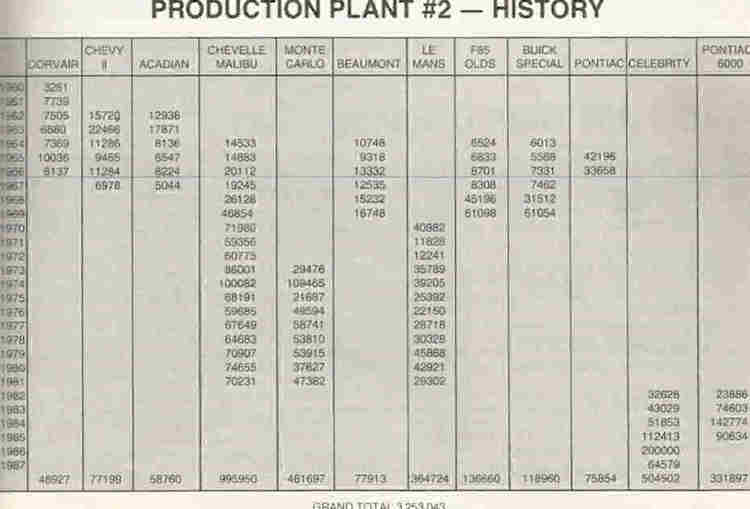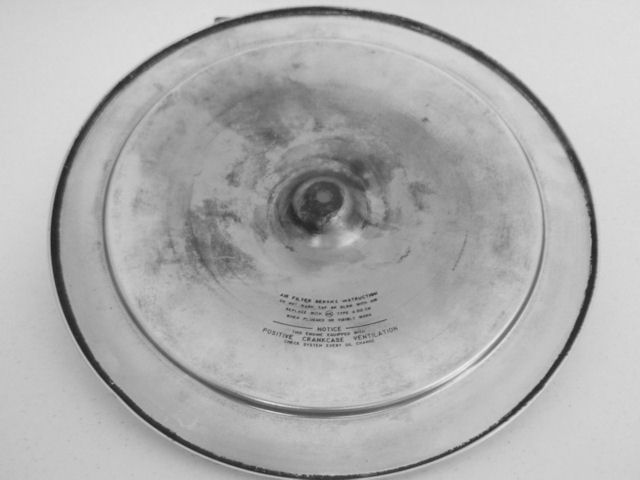Frequently Asked Questions
Q: I don't understand all this 'series'
stuff, can you help?
A: Not a problem. See this page
for a breakdown of Fisher Body's series designations.
Q: How many Chevelles were produced in (pick
a year)?
A: This varies depending on the year. See
this page for a year-by-year matrix.
Q: Is my Chevelle a Malibu?
A: That requires a pretty long answer, see this
page for a full explanation.
Q: Is my El Camino a Malibu?
A: That requires a pretty long answer, see this
page for a full explanation.
Q: How many LS6 (or any other engine) Malibu coupes were built in 1970?
A: There are no figures released by Chevrolet on how many of any body style were built with any specific option. See this page for more information. The same methods described on this link could also apply to any regular production option in multiple years.
Q: Don't all SS Chevelles have bucket seats?
A: Actually, no. While bucket seats were part of the Malibu SS Chevelles
in 1964 and 1965, all subsequent years from 1966 through 1972 came standard
with bench seats. Bucket seats were not only optional on SS396 Chevelles
from 1966 through 1968, but all SS optioned Chevelles from 1969 through
1972. The lone exception is 1969 when the SS option could be ordered
on the 300 Deluxe 2-door coupe and 2-door sport coupe; bucket seats
could not be ordered in the 300 Deluxe series so all SS optioned 300
Deluxe Chevelles in 1969 came equipped with the same bench seat as non-SS
optioned 300 Deluxe Chevelles.
Q: My 1970 SS didn't come with a tach or gauges, is it really
an SS?
A: Another pretty long answer, see this page
for all the details.
Q: I have a Hugger Orange 1969 Chevelle. Is it a true SS?
A: If, and only if, the Fisher Body Number tag shows a paint code of 72, you can be assured 99.99% it is a true SS-optioned 1969 Chevelle. If your 1969 Chevelle is Monaco/Hugger Orange but has any other paint color code or the paint code area has two dash characters (- -) or is blank, then the paint color does not prove it is an SS-optioned Chevelle. In 1969 only, two special colors (72 for Monaco/Hugger Orange and 76 for Daytona Yellow) were offered on SS-optioned Chevelle 300 Deluxe coupes and sport coupes as well as the Malibu sport coupe, convertible, and sedan pickup. The color code (72 or 76) would be indicated on the Fisher Body Number tag. There are some 1969 COPO Chevelles done in Hugger Orange and/or Daytona Yellow and those are NOT considered to be SS396-optioned Chevelles.
Q: How can I tell if my 1971 Chevelle is an SS or not?
A: Beginning in 1971 the Z15 SS Equipment option was more of a dress-up
option than a performance option. Stripes, hood pins, 15-inch wheels/tires,
and round pod speedometer and fuel gauge among some
other items were included. Any optional V8 engine
could be ordered along with the Z15 SS option. So a 1971 Chevelle Malibu
sport coupe, convertible, or sedan pickup could be ordered with the
Z15 SS option with a 350-2, 350-4, 402-4, or 454-4 engine and any
optional transmission. All of these engines, with the exception
of the 454-4, could be ordered without the Z15 SS option as well; meaning
there are documented 402-4 Malibus that did not order the SS option
as well. If the 454-4 engine was ordered the Z15 SS option was
mandatory.
Note: The same holds true for 1972 Chevelles as well concerning the Z15 SS option. One major difference in 1972 is the engine size is coded in the VIN. If the engine size code is the letter "W", it shows a 454 engine and thus, must also have been ordered with the Z15 SS option. (See 1972 VIN page for all 1972 Chevelle engine designation letters and here for items included in the 1972 version of the Z15 SS option.)
Q: My (1966 or 1967) Chevelle has some numbers beginning
with 13817xx on the rear trunk lip near the weather-strip. Does this
prove it's a real (1966 or 1967) SS396 Chevelle? They don't seem to
match my VIN.
A: Really two questions here. Question #1, "Does this prove
it's a real SS396 Chevelle?" Yes, sort of. The 13817 number
indicate the series the panel was stamped for and the 'xx' number
indicates the week of the calendar year the panel was stamped. If a
13617 Malibu quarter panel was replaced on a 13817 SS396 due to an
accident in its lifetime, this would indicate it is not an original
quarter panel.
The second implied question about matching or not matching your VIN
is also a misconception. Any partial VIN found on any 1964 through 1972
Chevelle will NEVER, repeat NEVER have the series or model designation
such as 136xx or 138xx. A partial VIN (or hidden VIN) will contain as
a minimum the model year, the assembly plant and the vehicle's sequence
number such as 7K123456. Beginning January 1, 1968 when stamping this
partial VIN on all engines and major body shell (usually behind the
heater box on the firewall), the format included a preceding number "1"
to indicate Chevrolet division of General Motors.
The best way to determine if your 1966 or 1967 Chevelle is a true SS396
Chevelle is to check the entire VIN on your registration/title against
the plate on the driver side A-pillar. All 1966 and 1967 (as well as
1968) SS396 Chevelles begin with 13817 or 13867 (1968 SS396 Chevelles
begin with 13837, 13867 or 13880) and all non SS396 Chevelles don't.
One caution here, there were 1967 and 1968 Concours station wagons with
the series/model designation 13835; so be sure to read beyond the '138'
series and ensure the model number designation is correct for a 1966-1968
SS396 Chevelle.
Q: How many Chevelles were produced in Canada?
A: The numbers shown are not broken down by any series or body style.

Q: How can I tell if my open element chrome air cleaner lid
is correct for my Chevelle?
A: First you need to discover a couple of things about your engine.
The open element air cleaner with a chrome lid was used from 1966 though
1970 on the following engines:
1967-1968 327/275hp L79
1966-1970 396/375hp L78
1966-1970 396/350hp and 350hp L34 without cowl induction hood in 1970
1970 454/360hp and 450hp LS5/LS6 without cowl induction hood
The underside of the chrome lid should have silk-screened instructions pertaining to the filter element. Reproduction units typically do not have these instructions. Also note that the silk screening on 1966-1968 units is 'curved' while the 1969-1970 is 'straight.'
1966, 1967, & 1968

1969 & 1970


 Home
Home Decode
Decode Tech
Tech Tools
Tools Dale's Coins/CDs
Dale's Coins/CDs Contact
Contact Chevelle
of the Month
Chevelle
of the Month Things
For Sale
Things
For Sale Custom
Stickers
Custom
Stickers